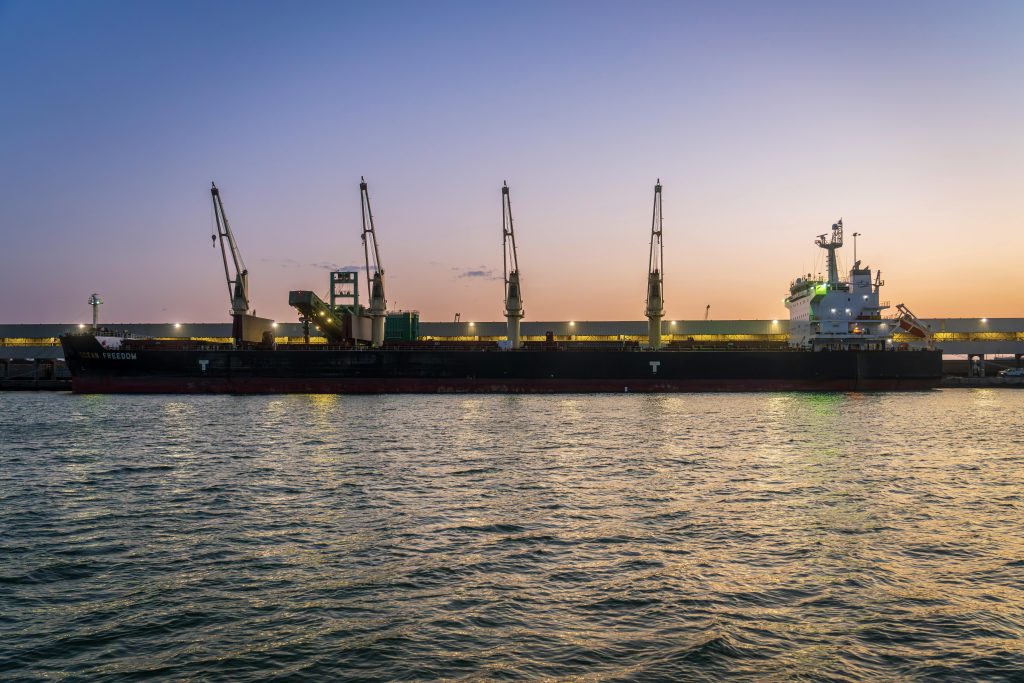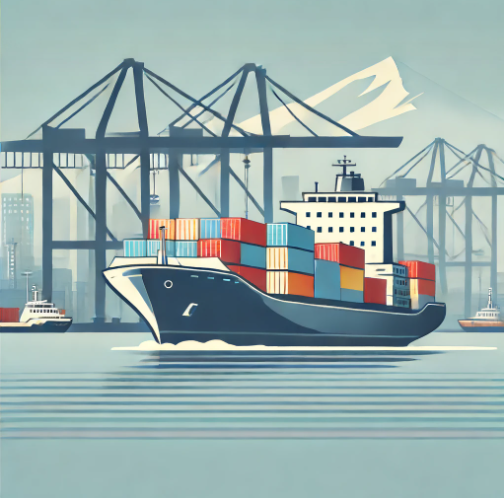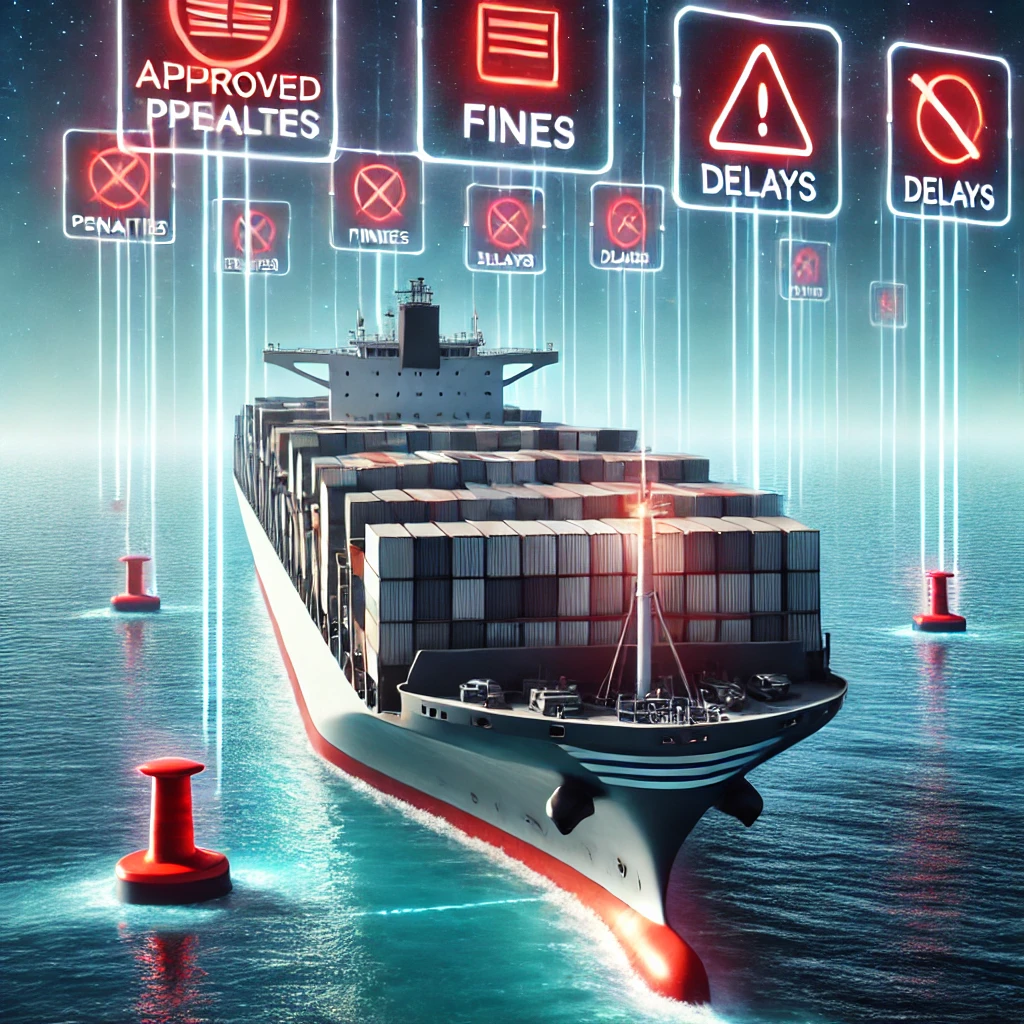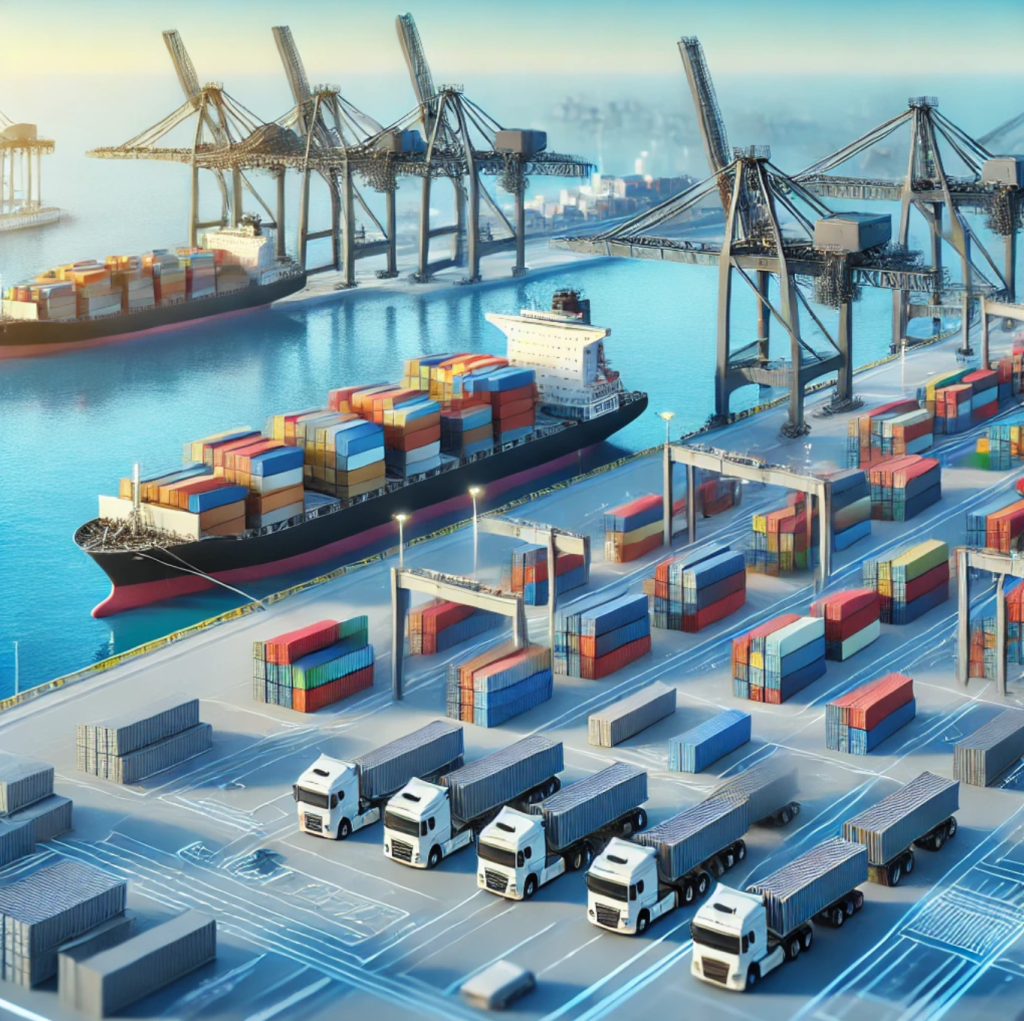Understanding the Automated Manifest System (AMS)
It is an electronic data interchange (EDI) system designed to streamline the process of submitting cargo information to CBP.
AMS is used primarily by ocean carriers, rail carriers, and airlines to electronically transmit shipment details and manifests, facilitating the efficient processing and clearance of goods entering the United States.

AMS Process Visualizer
Click on each step to learn more about the AMS process.
Carriers gather all necessary shipment information, including:
- Vessel name and voyage number
- Bill of Lading details
- Container numbers
- Commodity descriptions
- Shipper and consignee information
Carriers submit the prepared data electronically to CBP via the AMS system. This must be done:
- 24 hours before loading for ocean shipments
- 4 hours before arrival for air shipments
- 2 hours before arrival at the border for rail shipments
U.S. Customs and Border Protection reviews the submitted information:
- Automated checks for completeness and accuracy
- Risk assessment algorithms applied
- Potential flagging for further inspection
CBP provides status updates through the AMS system:
- "Accepted" - Filing is complete and approved
- "Rejected" - Errors found, corrections needed
- "Hold" - Further inspection or information required
Based on the status update:
- Cleared shipments proceed to entry
- Rejected filings must be corrected and resubmitted
- Held shipments undergo further inspection or documentation review
Importance of AMS in Shipping
AMS significantly enhances the efficiency of cargo processing by allowing carriers to submit manifest information electronically. This reduces the need for paper-based documentation and speeds up the clearance process.

The system helps CBP to monitor and target high-risk shipments before they reach U.S. ports. By providing detailed information in advance, CBP can better assess potential threats and take necessary actions to ensure the security of the supply chain.

AMS ensures that carriers comply with U.S. regulations by mandating the timely and accurate submission of cargo information. Non-compliance can result in penalties, fines, and delays.

How AMS Works
Understanding AMS Functionality
- Data Submission: Carriers must submit detailed shipment information through the AMS. This includes the vessel name, voyage number, cargo description, consignee, shipper, and other relevant details.
- Electronic Filing: The information is submitted electronically via EDI, ensuring that data is transmitted quickly and accurately to CBP.
- Manifest Review: CBP reviews the submitted manifests to identify any discrepancies or issues. The system enables CBP to focus on high-risk shipments while expediting the clearance of low-risk cargo.
- Release and Clearance: Once the manifest is reviewed and approved, CBP issues a release notification, allowing the cargo to be cleared and transported to its final destination.
Advantages for Businesses
- Reduced Delays: By submitting information in advance, businesses can reduce the likelihood of delays at ports, ensuring that their goods reach their destination on time.
- Cost Savings: Efficient processing and reduced paperwork translate into cost savings for carriers and importers.
- Enhanced Security: AMS helps in identifying and mitigating security threats, ensuring that goods are transported safely and securely.
- Improved Compliance: Automated submission and processing help ensure that businesses comply with regulatory requirements, avoiding penalties and fines.
Key Components of AMS
A crucial document in AMS filing, it provides detailed information about the cargo, including the shipper, consignee, and description of goods.
For consolidated shipments, each individual consignment has its own house bill of lading. This must be submitted to AMS separately.
Unique identifiers for each container in the shipment, allowing for precise tracking and identification.
Detailed descriptions of the goods being shipped, including their quantity and weight.
Details about the vessel transporting the cargo, including its name and voyage number.
Common Misconceptions about AMS
Clarifying Frequent Confusions
- AMS vs. ISF: While AMS deals with the electronic submission of cargo manifests, Importer Security Filing (ISF) focuses on providing detailed shipment information to CBP before goods are loaded onto a vessel bound for the U.S.
- Role of Carriers: It is the responsibility of the carriers (ocean, rail, air) to submit AMS data, not the importers or exporters. However, accurate information must be provided by all parties involved.
- Automated Filing: AMS does not eliminate the need for manual checks. CBP still conducts inspections and verifications to ensure the accuracy of the submitted data.

FAQs about AMS
Benefits of Using AMS
Answers to Common Questions
- What is the Automated Manifest System (AMS)?
- AMS is an electronic system used by U.S. Customs and Border Protection to receive and process cargo manifest information from carriers.
- How does AMS improve efficiency in shipping?
- By allowing electronic submission of cargo details, AMS reduces the need for paper documentation and speeds up the clearance process.
- Who is responsible for filing AMS data?
- Carriers, such as ocean, rail, and air transport companies, are responsible for submitting AMS data to CBP.
- What information is required for AMS filing?
- Required information includes the bill of lading, house bill of lading, container numbers, commodity descriptions, and vessel details.
- What are the benefits of using AMS?
- Benefits include reduced delays, cost savings, enhanced security, and improved compliance with regulatory requirements.
Conclusion
Summary and Final Thoughts
The Automated Manifest System (AMS) is a critical tool in the U.S. customs process, designed to streamline the submission and processing of cargo information. By understanding and utilizing AMS, carriers can ensure efficient, secure, and compliant transportation of goods into the United States. Proper use of AMS helps in reducing delays, enhancing security, and achieving cost savings, ultimately contributing to a more efficient global supply chain.
